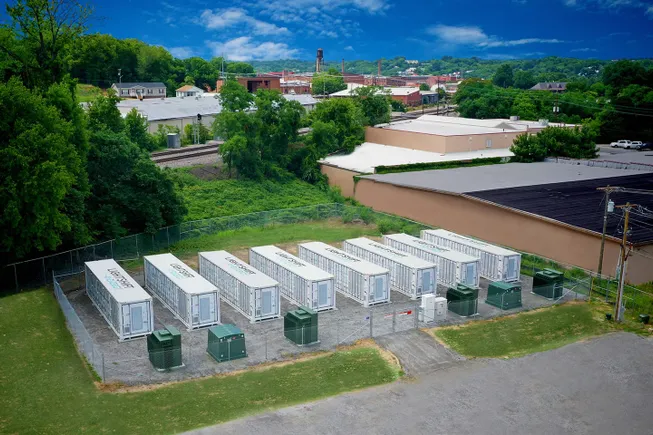
U.S. commercial crude oil inventories, excluding those in the Strategic Petroleum Reserve (SPR), increased by 0.2 million barrels from the week ending April 11 to the week ending April 18, the U.S. Energy Information Administration (EIA) highlighted in its latest weekly petroleum status report.
This report was released on April 23 and included data for the week ending April 18. It showed that crude oil stocks, not including the SPR, stood at 443.1 million barrels on April 18, 442.9 million barrels on April 11, and 453.6 million barrels on April 19, 2024. Crude oil in the SPR stood at 397.5 million barrels on April 18, 397.0 million barrels on April 11, and 365.7 million barrels on April 19, 2024, the report outlined.
Total petroleum stocks – including crude oil, total motor gasoline, fuel ethanol, kerosene type jet fuel, distillate fuel oil, residual fuel oil, propane/propylene, and other oils – stood at 1.605 billion barrels on April 18, the report showed. Total petroleum stocks were down 0.3 million barrels week on week and up 5.9 million barrels year on year, the report revealed.
“At 443.1 million barrels, U.S. crude oil inventories are about five percent below the five year average for this time of year,” the EIA said in its latest weekly petroleum status report.
“Total motor gasoline inventories decreased by 4.5 million barrels from last week and are about three percent below the five year average for this time of year. Finished gasoline inventories increased and blending components inventories decreased last week,” it added.
“Distillate fuel inventories decreased by 2.4 million barrels last week and are about 13 percent below the five year average for this time of year. Propane/ propylene inventories increased by 2.3 million barrels from last week and are seven percent below the five year average for this time of year,” it continued.
U.S. crude oil refinery inputs averaged 15.9 million barrels per day during the week ending April 18, according to the report, which highlighted that this was 326,000 barrels per day more than the previous week’s average.
“Refineries operated at 88.1 percent of their operable capacity last week,” the EIA noted in the report.
“Gasoline production increased last week, averaging 10.1 million barrels per day. Distillate fuel production decreased last week, averaging 4.6 million barrels per day,” it added.
U.S. crude oil imports averaged 5.6 million barrels per day last week, the report stated. It pointed out that this was a decrease of 412,000 barrels per day from the previous week.
“Over the past four weeks, crude oil imports averaged about 6.1 million barrels per day, 6.8 percent less than the same four-week period last year,” the EIA said in the report.
“Total motor gasoline imports (including both finished gasoline and gasoline blending components) last week averaged 858,000 barrels per day, and distillate fuel imports averaged 97,000 barrels per day,” it added.
Total products supplied over the last four-week period averaged 19.9 million barrels a day, up by 0.4 percent from the same period last year, the EIA stated in its report.
“Over the past four weeks, motor gasoline product supplied averaged 8.7 million barrels a day, down by 0.4 percent from the same period last year,” the EIA noted.
“Distillate fuel product supplied averaged 3.9 million barrels a day over the past four weeks, up by 12.8 percent from the same period last year. Jet fuel product supplied was up 13.8 percent compared with the same four-week period last year,” it added.
In a Skandinaviska Enskilda Banken AB (SEB) report sent to Rigzone on April 24 by the SEB team, which looked at the EIA’s latest weekly petroleum status report, Ole R. Hvalbye, a commodities analyst at the company, highlighted that “U.S. refinery activity picked up in the week ending April 18, with crude inputs rising by 326,000 barrels per day to a total of 15.9 million”.
“Utilization rates also climbed to 88.1 percent. Gasoline output strengthened to 10.1 million barrels per day, while distillate fuel production edged lower to 4.6 million,” he added.
“Crude imports declined by 412,000 barrels per day to 5.6 million last week. Over the past month, import volumes have averaged 6.1 million barrels per day – down 6.8 percent compared to the same period a year ago. Gasoline and distillate imports came in at 858,000 and 97,000 barrels per day, respectively,” he pointed out.
Hvalbye went on to note in the report that “inventories were mixed”.
“Crude oil inventories (excl. SPR) rose slightly by 0.2 million barrels to 443.1 million, still five percent below the five-year average. Gasoline inventories posted a sharp draw of 4.5 million barrels and are now three percent under seasonal norms,” he added.
“Diesel inventories dropped by 2.4 million barrels, leaving levels 13 percent below the five-year average. Propane inventories rose by 2.3 million but remained seven percent under typical levels,” he continued.
Hvalbye stated in the report that product demand was generally stable.
“Total products supplied averaged 19.9 million barrels per day over the last four weeks, up 0.4 percent year on year. Gasoline demand slipped by 0.4 percent, while distillates and jet fuel rose sharply, by 12.8 percent and 13.8 percent, respectively,” he highlighted.
In an oil and gas report sent to Rigzone late Monday by the Macquarie team, Macquarie strategists revealed that they were forecasting that U.S. crude inventories would be down 4.4 million barrels for the week ending April 18.
“This compares to our early look which anticipated a 0.3 million barrel build,” Macquarie strategists said in that report.
To contact the author, email [email protected]




















